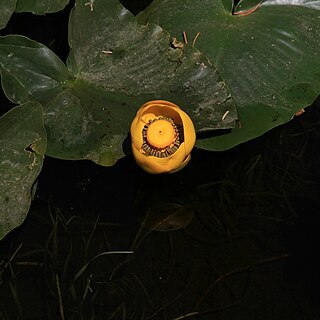A waterlily. It keeps growing from year to year. It has a creeping spongy rootstock. It can be 3-8 cm across. The leaves are almost heart shaped with 2 deep lobes at the base. The leaves are dull green and thick. They float on water. They are 40 cm long and 25 cm wide. The leaf stalks can be 15 mm thick. The flowers are round and stand out of the water. They are 10-13 cm across. There are 7 to 9 dark yellow sepals. The petals are somewhat hidden. The stamens are in 5-7 rows. The seeds are edible.

